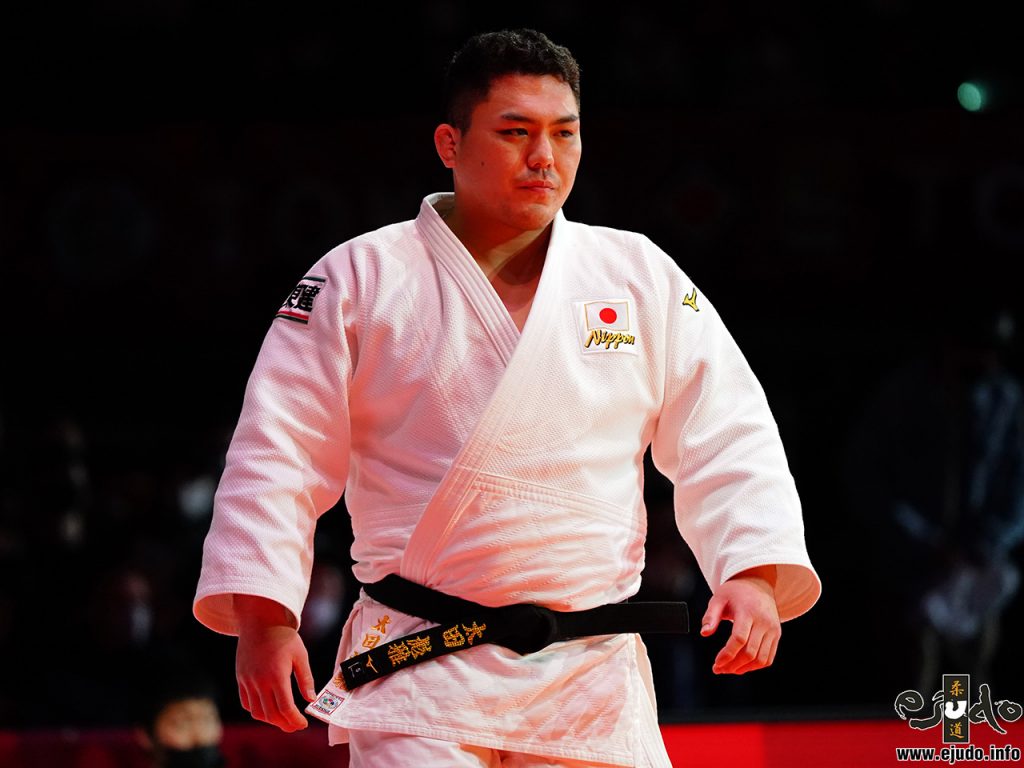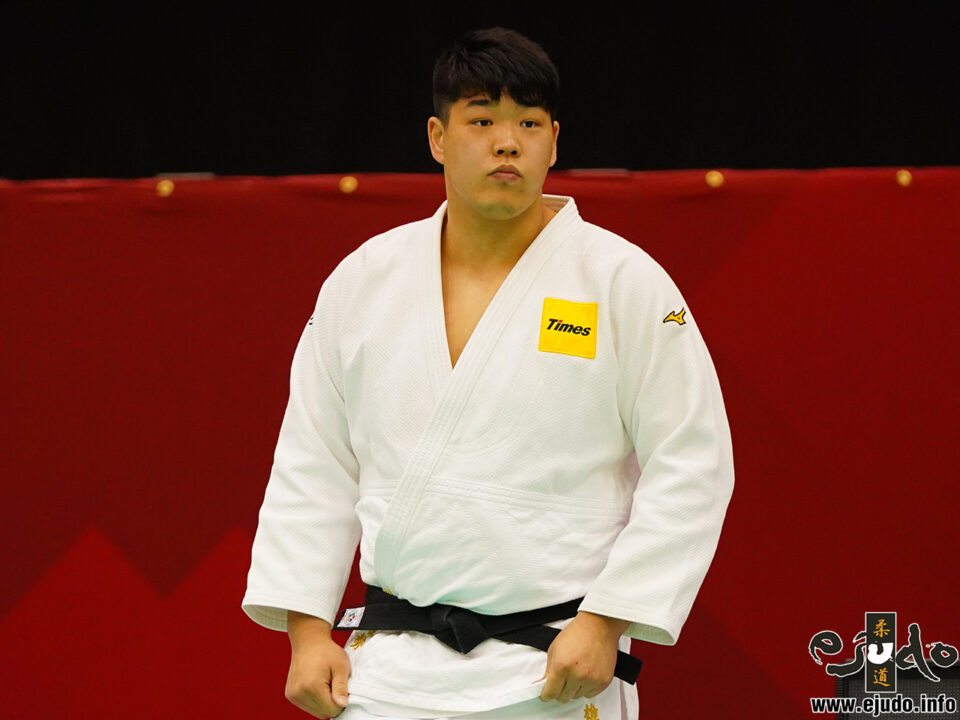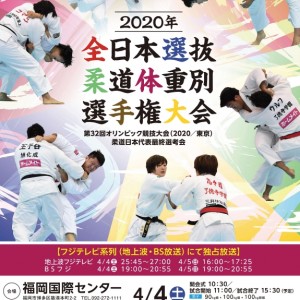[PREVIEW]All Japan Judo Championships Fukuoka 2023 Preview, MEN
by EJUDO, Japanese Judo website

All Japan Judo Championships (The All-Japan Weight Classification Championships) , to be held at the Fukuoka International Center from April 1, is a prestigious event to determine the best judoka in Japan in their weight class. This tournament has been the final selection round for the Olympics and World Championships for many years, but this year, the World Championships have been moved forward to May, so the Japanese representatives have already been selected. Therefore, the Japanese representative athletes will not participate in this event.
Since the number one athlete in his/her class will not participate in this tournament, this will be a competition to determine the “pursuers” in the context of the competition for the Olympic team. It is difficult for any of the athletes to be selected for the Olympic team without failing to represent the World Championships, but they will do their best to bet on the slightest possibility. They need to win this tournament and then aim to be selected as representatives for the Asian Games, which will be held after the World Championships.
Also, the success of the young athletes who will lead the next generation will be watched closely. The current Japanese representatives in the 60kg, 73kg, and 81kg weight classes are veterans. In the 100kg weight class, where the competition continues to be fierce, no one has yet emerged as a serious contender. This event is also a battle to determine the young leaders of the “post-Paris world. All eyes are on the potential leaders who have already made an impact, such as KONDO HAYATO and FUKUDA YAMATO in the 60kg weight class, to see if they can take this position.
*Player affiliations are as of March 2023. They may change from April, the new fiscal year.
-60kg

Two young and energetic Kondo and Fukuda challenge Nagayama
The lower side of the tournament features a strong group of players. Last year’s Kodokan Cup winner Hayato Kondo (Kokushikan Univ.), Sho Tateyama (Park24), Genki Koga (Asahi Kasei), and Yamato Fukuda (Hieizan HS) are all placed here. Kondo is the most likely candidate to win, but the high level of the competition is so mixed that anyone could win. This block is filled with players who have their own unique characteristics, so it will be interesting to see how the legitimate Kondo will fare in the competition.

Fukuda, who has already won a World Tour title despite being a high school student, is one to watch especially closely. If he can achieve another result in this tournament, Fukuda will be looked upon as the next generation’s star player. The key to his success in this tournament will be whether or not he can continue to use his unique entry into the tournament, the vertical shiho-gatame, which is expected to be thoroughly countered by his opponents.

The favorite to win the upper side of the tournament is the No. 1 seed Ryuju Nagayama (Ryotokuji Univ.). However, Nagayama has not been performing well recently, and it is not unlikely that he will lose in the middle of the tournament. Nagayama will play his first match against Dai Aoki (Park24), whom he lost to in last year’s tournament. This is a very tough opponent for Nagayama.
If all goes well, the final card will be Nagayama vs. Both are aggressive fighters who sell the power of their throwing techniques, so it should be an easy matchup for both fighters to show their strength. The match is expected to be a head-to-head exchange of techniques. Based on the recent performance, I expect Kondo to have the advantage. In this type of fight, power is the key factor. We will first look at the first contact to see who is the better fighter in this respect.

Nagayama has long maintained his position as the absolute second best fighter in Japan. However, due to his own poor performance and the rapid growth of younger fighters, he could be rated as the third or fourth best fighter in the ranking, if only for his recent results. This is a critical point in his career. This is a major turning point in the history of the Japanese -60kg category.
-66kg

Ryoma Tanaka is the leading candidate for the championship.
Ryoma Tanaka (Univ. of Tsukuba) is the most watched athlete in the 66kg weight class. Although he has been unable to place high in international competitions due to being bounced around by strong medal-class opponents, he has more experience and ability than other competitors, and is considered a favorite to win the championship in Japan. In a recent tournament, he temporarily scored a Giawase by throwing Joshiro Maruyama with a right tsurikomi-goshi, but the score was canceled due to a “head-dive” penalty. With two world champions, Hifumi Abe and Joshiro Maruyama, absent from this year’s tournament, Tanaka is presumed to be aiming for the championship with a more solid fight.

Tanaka’s opponents include last year’s Kodokan Cup winners Takeshi Takeoka, Taikoh Fujisaka, Yuji Aida, and GS Tokyo 2nd place finisher Shinsei Hattori. There is no significant difference in the technical level of all of them. Tanaka excels in the primitive elements of ground power and physical strength (stamina), and he uses a lot of horsepower back throws, so the key will be how his opponents respond. In this class, which has long been dominated by Abe and Maruyama, Tanaka is establishing himself in the third position. It will be interesting to see if he can solidify this position with a victory, or if other players will challenge him.

-73kg

Can Oyoshi defend his position? His rival is Koga.
Ken Oyoshi (Ryotokuji Univ. Staff), the top seed, is considered the favorite to win the tournament. In terms of judo strength itself, he is considered to dominate the others. However, his opponents Hayato Koga (Keio High School Teaching), Ryo Tsukamoto (Park24), Kenshi Harada (ALSOK), and Yudai Tanaka (Kokushikan Univ.) could also defeat Oyoshi, depending on their physical condition and the progress of the match scenario. Overall, a mixed field is expected.

In this category, there is no one qualified for the Olympics games other than World Championships representative Soichi Hashimoto (Park24) (even second-ranked Oyoshi is ranked 48th in the world), and the national team urgently needs to train a player to follow in Hashimoto’s footsteps. Until now, Oyoshi has been sent to international tournaments with this goal in mind, but his position was shaken when he was eliminated early at the Grand Slam Tashkent. As if to indicate the decline in his standing, Koga was selected to represent Japan in the team competition at the World Championships. The winner of this year’s tournament should be in a position to be sent to many international tournaments, as he would be the next in line after Hashimoto. Will Oyoshi win the tournament and maintain his current position, or will another player take his place? This is a very important tournament.
As a result of the drawing of lots, Oyoshi and Tsukamoto will be in the top half of the field, while Koga, Harada, and Tanaka will be in the bottom half. For Oyoshi, the semifinal against Tsukamoto, a fellow high school and college student whom he lost to last year, should be the most nerve-wracking matchup. Meanwhile, at the lower ranks, Harada and Tanaka will meet in the first round, with the winner likely to face Koga in the semifinals. Based on his recent record, Koga is the favorite, but Harada, who has been in a slump, could make a comeback, and the young Tanaka could make a leap forward.

The final is expected to be a showdown between Oyoshi and Koga. They met twice last year, winning once and losing once, and Koga won their most recent meeting at the Grand Slam Tokyo. If the match ends quickly after a fierce battle, the aggressive Oyoshi will have the advantage. On the other hand, in a long match, Koga, with his superior ability to organize a match, is expected to have the advantage.
-81kg

Two veterans, Fujiwara and Kohara, are challenged by promising young players such as Oino
Takeshi Sasaki (ALSOK), last year’s Asian champion, is still recovering from a left knee injury sustained at the Grand Slam Tokyo last December and has withdrawn from the tournament. Therefore, Sotaro Fujiwara (Asahi Kasei) and Kenya Kohara (Park24) were placed in the first and second seed positions, respectively. Following the seeding order, these two will be the main contenders for the championship.

In this bracket, too, a generational change is taking place. Yuhei Oino (Teikyo Heisei Univ.), Kaito Amano (Tokai Univ.), Yoshito Hojo (Nihon Univ.), and other lively young players are lined up. The general framework of the tournament’s composition is that these promising young players will challenge top-tier players such as Fujiwara and Kohara.

Fujiwara will face the stubborn Shota Kugimaru (Park24) of Judo in the first round, and it will be important to see how well he can conserve his energy here. In the semifinals, Fujiwara will not have much difficulty if either Goki Maruyama (Kiyonaga) or Kaito Amano win. This is because he is a good match against both of them in terms of judo style.

Kohara, on the other hand, is scheduled to face Oino in the first round and Hojo in the semifinals. Oino is a technical fighter and has a good combination of kumite and throwing techniques. However, Kohara is the same type of fighter, and he is also superior to Oino in terms of power and technique. For Kohara, Oino would be an easy opponent to fight. Kohara also won last year against Hojo with a score of 3 times Shido in a one-sided, dominant match. He should not have too much trouble. Kohara is considered the likely winner this part.
At last year’s Grand Slam Tokyo, Sotaro Fujiwara and Kenya Kohara met in the semifinals. In this match, Kohara defeated Fujiwara by taking Waza-ari with the Osoto-gari. However, a close examination of the match showed that Fujiwara was superior to Kohara in technical details and primitive power. Having experienced defeat, Fujiwara will enter this match with a heightened sense of caution. Fujiwara has the advantage in strength. Kohara will use his characteristic skill in kumite and his ability to seize the key points of the match. He should try to upset his opponent’s mind and create opportunities.
*Fujiwara cancelled his entry on March 27, due to an injury.
-90kg

While the hierarchy at the top is not set in stone, the light is shining on Tajima, who is in “provisional second place”.
The top seed in this year’s tournament is Goki Tajima (Park24), winner of last year’s Japan National Team member selection. The second seed is last year’s Kodokan Cup winner, Mashu Baker (Japan Central Racing Association), and the third seed is Tokyo Olympics representative, Shoichiro Mukai (Toshin Kogyo). Considering their track records, these three plus Kenta Nagasawa (Park24) make four candidates for the championship. In addition, fans are also interested in college student Issei Nakanishi (Kokushikan University), who also competed in the All-Japan Championships.

Kosuke Mashiyama (Park24), who became the leader in this weight class after the Tokyo Olympics, failed to weigh in at the Grand Slam Tashkent in March and had to leave the national team. As a result, Sanshiro Murao (Tokai University) is the only Japanese representative for the individual competition at the Doha World Championships. Tajima was also selected to represent Japan in the team competition. The strategy of the Japanese National Team is to raise the level of the entire group by having at least two of the most top players compete against each other as rivals. Currently, Tajima is in the tentative “second” position. This position is not stable because Tajima’s performance in international competitions is not yet sufficient. For other players, there is a possibility of an upset. Whether Tajima wins or the other players make a breakthrough, this tournament may be the final turning point to determine the representatives for the Paris Olympics Games.
Tajima and Nagasawa were placed on the upper side of the tournament, while Baker and Mukai were placed on the lower part. Tajima can take a variety of positions in Tsurite and can perform a powerful seoinage. Tajima has an advantage over Nagasawa, who must secure multiple fixed positions to execute his techniques. Nagasawa excels in kumite, but he is no match for Tajima, who can fight in any form. In fact, Tajima defeated Nagasawa by Ippon at seoinage last year.

Baker and Mukai fought in the final of last year’s Kodokan Cup, with Baker winning by Ippon (Yokoshiho-gatame). Mukai has an advantage when fighting at a distance from his opponent. However, Mukai has a habit of getting close to his opponents, even those who are good at close combat like Baker. Given this, Baker is likely to win.
Tajima vs. Baker in the finals was a 1-1 loss last year. In the most recent Kodokan Cup semifinal, Baker won by 3 times shido. Tajima is also good at close combat, but in this area, Baker has the advantage in comparison. Tajima has the advantage in the middle range where he can utilize his seoinage and ashi-waza, while Baker has the advantage in close combat. The key to the fight will be at what distance Tajima tries to fight.
-100kg

Wolf’s condition will determine the entire tournament. Ueoka is his opponent.
Last year’s champion Ryunosuke Haga (Asahi Kasei) dislocated his finger at the Tokyo Championships on March 19. He was forced to withdraw from the tournament on short notice.

The favorite to win the championship is Tokyo Olympics gold medalist Aaron Wolf (Ryotokuji Univ. Staff), but Wolf has not shown any good performance since the Tokyo Olympics, and it is difficult to predict his condition in this tournament as well. However, if he continues to have a poor showing, the second seed and last year’s Kodokan Cup champion, Kotaro Ueoka (Tenri Univ.), is likely to win the tournament.
Kentaro Iida (Asahi Kasei), a Doha World Championships representative, has not performed as well as expected. And the hierarchy below the second place is also not settled. It is chaos. Ueoka has been the most successful recently, but his position is not stable. The winner of this tournament has much to gain.

The draw placed Wolf in the upper part of the tournament and Ueoka in the lower part. Wolf will have to face last year’s national team member selection winner, Koki Kumasaka (Kokushikan Univ.). Kumasaka is a strong competitor with his tenacious Seoinage and Osoto-otoshi, as well as his sharp Ashi-waza. If Wolf is still in poor condition, he could lose. In the semifinals, promising young prospect Dota Arai (Saitama Sakae High School) is expected to win. This player is known for his powerful one-shot attacks, but he still lacks the ability to structure a match. The winner of Wolf vs. Kumasaka will likely go on to win the final.

On the lower part, Ueoka is the likely winner. None of the opponents in this matchup has the kumite skills to contain Ueoka’s seoinage. Even if it takes a long time, we think Ueoka’s victory itself will be solid.
In the final, if Wolf is in condition to make it to the final, then Wolf will have the advantage, otherwise Ueoka will have the advantage.
+100kg
Two seeded players, Ota and Ogawa, are strong candidates for the championship.

A high-level, mixed competition, with all proven players. Byoke Ota (Asahi Kasei) was seeded first, and Daigo Kagawa (ALSOK) was seeded second. Hisaki Harasawa (Chofu Kosan) was originally entered for the tournament, but he was forced to pull out due to injury.

The two candidates for the championship were last year’s champion Yusei Ogawa (Park24) and Ota. However, there are many promising young players such as last year’s Kodokan Cup champion Tsubasa Takahashi (Kokushikan Univ.), Sosuke Matsumura (Park24), and Kanta Nakano (Tenri Univ.), and it is quite possible that these players will win the tournament as well.
The pairings placed Ota on the upper side of the tournament and Ogawa on the lower side.
Ota is scheduled to face Takahashi in the first round if all goes well, and Matsumura in the semifinals. In both matches, Ota will have the advantage in the middle and long range, as he has superior control over his kumite techniques. Ota is likely to win if he does not make any major mistakes. Takahashi and Matsumura will be looking to find a way to make the most of their close combat. Takahashi has the most decisive Newaza technique in his class. It will be interesting to see how Takahashi will try to get into a ground battle, and how Ota will handle it.

On the lower side of the tournament, Ogawa is the favorite to win. Kagawa, who will face Ogawa in the first round, has recently been playing more tricks, such as using a Kata-guruma, and there is a possibility that the match will be a struggle, but the general scenario is that Ogawa will be able to exert pressure.
Ogawa injured his knee last summer. His performance in his return match at the Tokyo Metropolitan Championships (3/19) was not very good . The key will be to see how he recovers from the experience of fighting in one tournament.
In the final between Ota and Ogawa, Ogawa has the advantage as far as the previous fights are concerned. Ota’s lifeblood is his control of the kumite, but if Ogawa has his back and applies pressure, he will lose this advantage. Ogawa won the most recent direct confrontation, last year’s Grand Slam in Ulaanbaatar, when he fought in this style. The same development is likely to take place this time as well. Ota would like to see a clear solution to the problem of being “covered” with Ogawa’s tsurite or being closely pressed by the opponent in close quarters.







